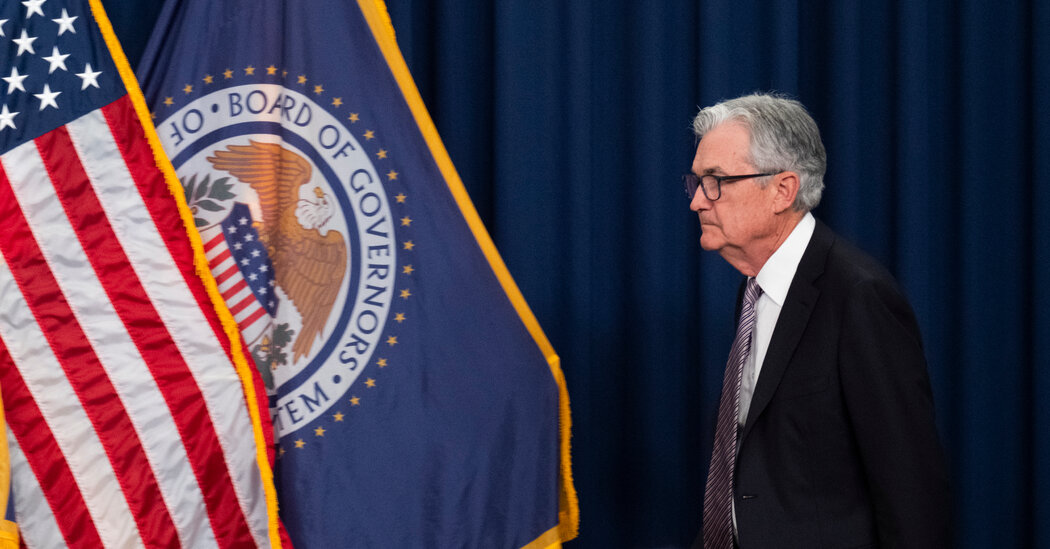‘Barbie’ Ruled the Box Office, but 2023 Was Tough for Women in Hollywood
When Greta Gerwig did not receive an Oscar nomination last month for best director for “Barbie,” despite the film’s nod for best picture and its status as a global box office phenomenon, the news revived scrutiny over gender diversity among the Academy of Motion Picture Arts and Sciences’ membership.
The directors’ branch, which chooses the five nominees for that Oscar category, is 25 percent female. Over all, 34 percent of the academy’s more than 10,000 members are women.
“The academy, like our industry, should reflect the world in which we live,” said David Heyman, a producer of “Barbie.” “The fact that it doesn’t is just wrong.”
In 2016, the academy — reacting to the #OscarsSoWhite backlash after two straight years of all-white acting nominees — announced its A2020 initiative, meant to double the number of women and people of color among its membership within five years. In June 2020, it said it had achieved those goals.
Since then, however, the percentage of women in the academy has grown by one point, to 34 percent. (Academy members may choose not to identify as a man or a woman. Other choices include “agender,” “nonbinary,” “other,” “prefer to self-describe” and “prefer not to say.”) The percentage of people of color has dropped one point, to 18 percent.
The academy is an invitation-only nonprofit that represents acceptance into the highest echelon of the movie industry. While membership requirements differ for each of its 18 branches, people must be sponsored by two members of the branch they are wishing to join. Oscar nominees are automatically considered for membership.
In an effort to maintain its roughly 10,000-member size, the academy has reduced the number of people it has admitted annually in recent years, from a high of 928 in 2018 to an average of 397 a year since 2020.
In an interview, Meredith Shea, the academy’s chief membership, impact and industry officer, said she was not satisfied with the current makeup of the membership, but added that the executive committee of each branch was “still looking at increasing representation across the board.”
“I’m taking a new look at what we need to do and the steps that need to be taken,” Ms. Shea said. “There’s 18 different branches that reflect different industries. So it’s looking at what you need to do in visual effects — are we creating a pipeline program there? What’s happening in costume and makeup is not what’s happening in some of our other disciplines.
“Nothing is slowing, nothing is stopping,” she added. “It’s just making sure that we’re doing this right and holistically, because it’s never going to be one size fits all.”
The directors’ branch is led by two women, Ava DuVernay and Susanne Bier. Only eight women have ever been nominated for best director, including Jane Campion twice and Justine Triet this year. Ms. Gerwig is one of them, having been recognized for “Lady Bird” in 2017. Three women have won the award: Ms. Campion, Kathryn Bigelow and Chloé Zhao. Two women have been nominated in the same year just once: Ms. Zhao and Emerald Fennell in 2021.
The academy has noted that, for the first time, three films nominated for best picture this year were directed by women: “Barbie,” Ms. Triet’s “Anatomy of a Fall” and “Past Lives,” which was directed by Celine Song. And in each of the past five years, at least one best picture nominee has been directed by a woman.
“Barbie” received eight nominations over all, including a nod for Ms. Gerwig and Noah Baumbach in the best adapted screenplay category.
Some branches — makeup and hair, casting directors, and costume designers — are dominated by women. The three that feature the fewest women are sound (15 percent), visual effects (12 percent) and cinematographers (11 percent).
Still, some advocates for better opportunities for women in the entertainment industry say that while they would like to see improved gender representation in the academy, it’s operating in a broader ecosystem.
“We want the academy to get to parity, but the academy reflects the industry,” said Kirsten Schaffer, the chief executive of Women in Film, a nonprofit advocacy group.
In a report released last month, the University of Southern California’s Annenberg Inclusion Initiative found that the number of women and women of color in starring or co-starring roles in the top 100 box office films in 2023 was the lowest since 2014.
And despite the $1.4 billion taken in by “Barbie” at the global box office, only 16 percent of the directors of the 250 top-grossing films for 2023 were women, according to a study by Martha M. Lauzen, the founder and executive director of the Center for the Study of Women in Television and Film at San Diego State University.
The U.S.C. study found that 30 of the 100 top-grossing films featured women in the starring or co-starring role — “a catastrophic step back for women and girls,” a co-author of the study, Stacy L. Smith, said. In 2022, 44 featured women in a starring or co-starring role.
Ms. Schaffer pointed to those statistics as evidence that the academy was in some ways “over-indexing” compared with gender representation in the industry as a whole. The academy’s acting branch, for instance, is 47 percent female.
What Ms. Schaffer would like is gender equality across all branches, specifically the ones in which women are rarely nominated, like cinematography and visual effects.
“The academy and the industry need to put more effort into moving those numbers faster,” she said. “We cannot wait another 100 years to get to even 30 percent of cinematographers. We’re inching up so slowly, it’s going to be like 2070 before we get anywhere near parity.”


